Introduction
As more and more people seem to be converting to MPEG-2 format, there has been the need (for whatever reason) to convert MPEG-2 video back to AVI. This can be quite a chore for most since there aren't many applications for doing this and getting it done right can be tricky.
Here I will show you how to convert MPEG-2 to AVI with no dropped frames or out of sync audio. Just MPEG-2 to AVI without a hitch. However, this tutorial requires a little more work than most are prepared to do. It isn't hard, it just involves more steps, but I can GUARANTEE perfect video/audio conversion. Be sure to follow the directions carefully and it will be smooth sailing from here!
Demuxing your MPEG-2 stream to AVI/WAV with Graphedit.
First, start up Graphedit. Just a note, I'm assuming the input stream is an MPEG-2 program stream, which includes audio and video. If you only want to convert the video, just omit the audio filters. Now, we need to get your MPEG-2 input stream into the graph. Choose Graph --> Insert Filters. Next, expand the DirectShow Filters tree and select File Source (Async.). At the next dialog box, choose your input MPEG-2 stream.
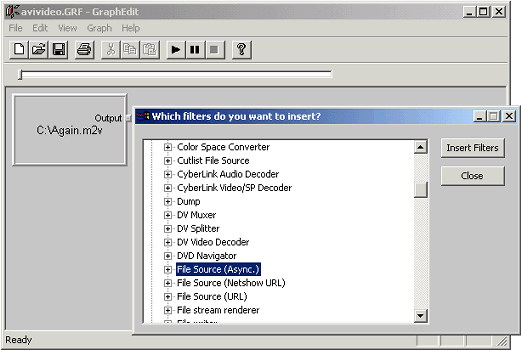
Now that our input stream is in the graph, we need to start inserting the appropriate filters. Choose Graph --> Insert Filters. From the DirectShow Filters tree, select your MPEG-2 splitter. I will be using Ligo's in this tutorial. Now, connect the OUTPUT plug from the File source to the INPUT plug on the MPEG-2 Splitter filter.
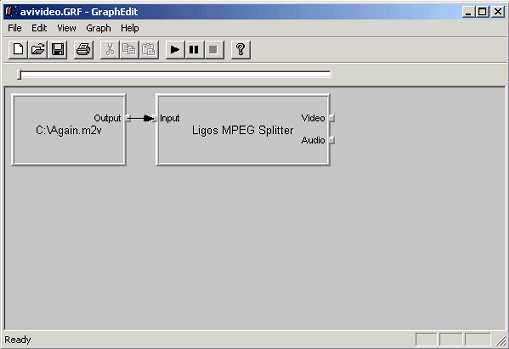
Now that our stream is split, we can start processing the independant video and audio streams.
Go back to the DirectShow Filters tree and choose an Audio Decoder and a Video Decoder. I wil be using Cyberlink's and Ligos', respectively.
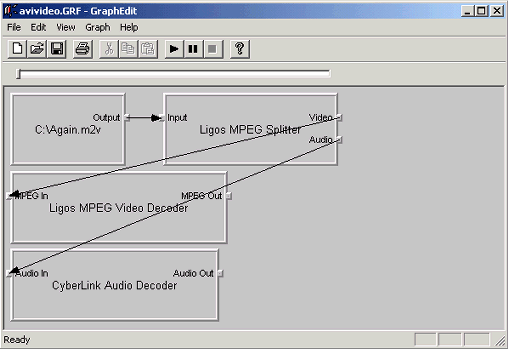
The next filter for audio will be the WAV Dest filter and for video a Video Compression codec. You don't have to compress your video here, but it is a very good idea. Just use Ben Rudiak-Gould's awesome HuffYUV v2.1.1 CODEC. Don't worry about quality, it's lossless compression =)
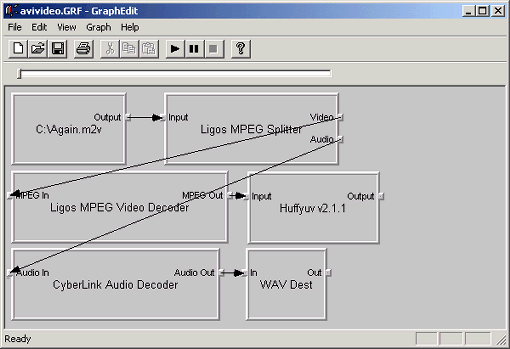
Back under the DirectShow Filters tree, the next filter for video is AVI Mux and the last filter for audio is File Writer. When you select the output filename for your WAV file, make sure to give it a .wav extension.
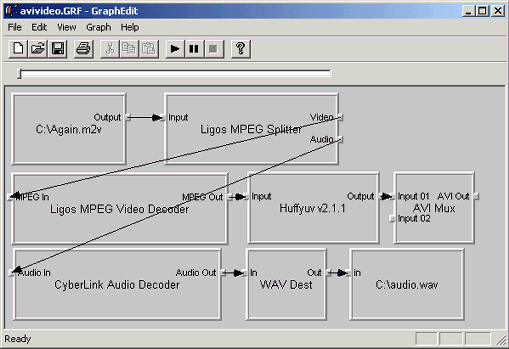
The last filter for video is the File Writer. Make sure to give the output filename an .AVI extension.

Now all you have to do is press the play button and wait for Graphedit to demux and convert your MPEG-2 to an AVI video file and a seperate WAV audio file. Now you can encode the files to VCD with TMPGEnc or another MPEG encoding program! Read one of the AVI --> MPEG FAQs to find out how.
Copyright © 1999 - 2001 happyg video
happyg_hgv@hotmail.com
|



